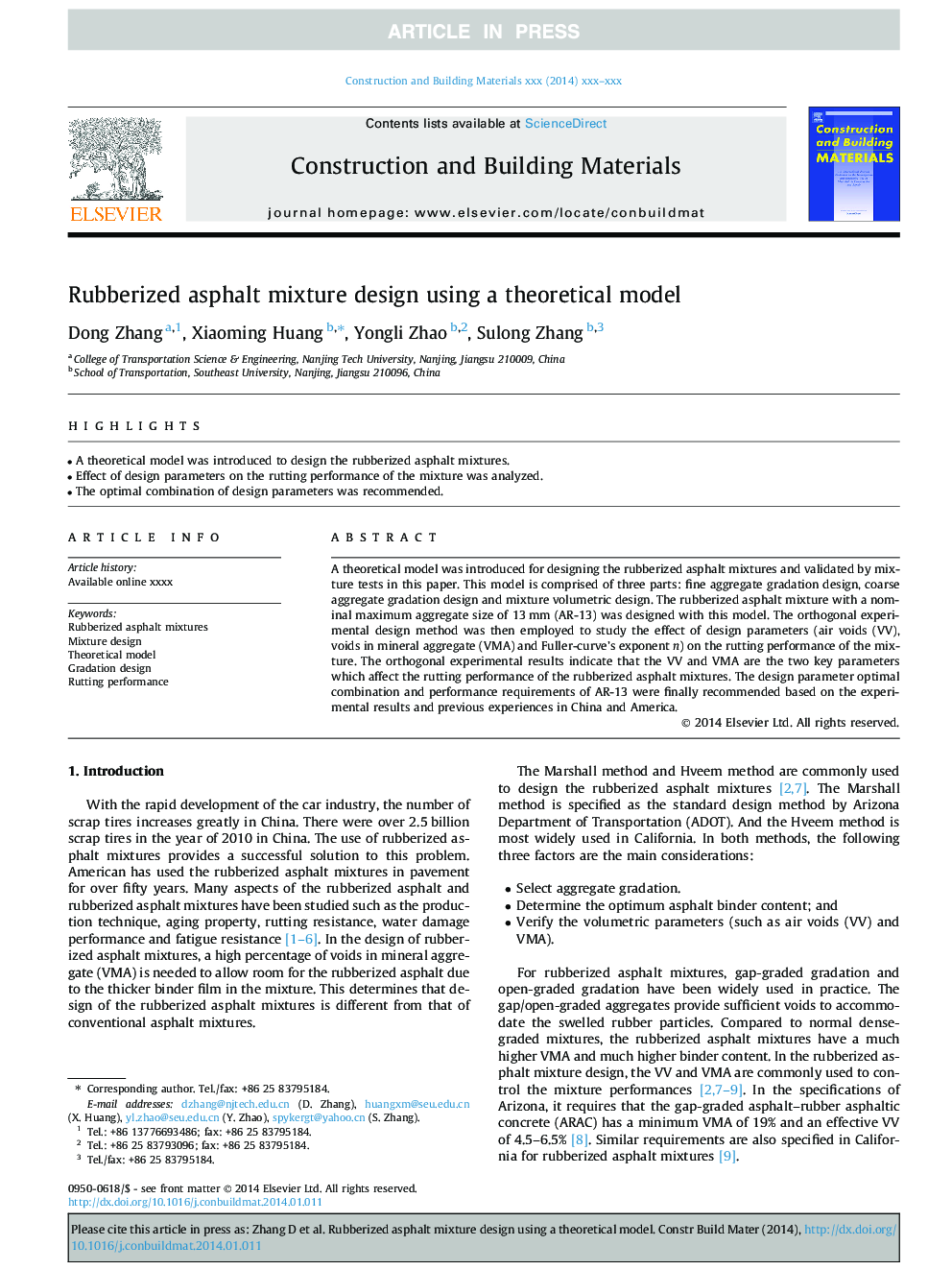| Article ID | Journal | Published Year | Pages | File Type |
|---|---|---|---|---|
| 10285200 | Construction and Building Materials | 2014 | 5 Pages |
Abstract
A theoretical model was introduced for designing the rubberized asphalt mixtures and validated by mixture tests in this paper. This model is comprised of three parts: fine aggregate gradation design, coarse aggregate gradation design and mixture volumetric design. The rubberized asphalt mixture with a nominal maximum aggregate size of 13Â mm (AR-13) was designed with this model. The orthogonal experimental design method was then employed to study the effect of design parameters (air voids (VV), voids in mineral aggregate (VMA) and Fuller-curve's exponent n) on the rutting performance of the mixture. The orthogonal experimental results indicate that the VV and VMA are the two key parameters which affect the rutting performance of the rubberized asphalt mixtures. The design parameter optimal combination and performance requirements of AR-13 were finally recommended based on the experimental results and previous experiences in China and America.
Related Topics
Physical Sciences and Engineering
Engineering
Civil and Structural Engineering
Authors
Dong Zhang, Xiaoming Huang, Yongli Zhao, Sulong Zhang,
